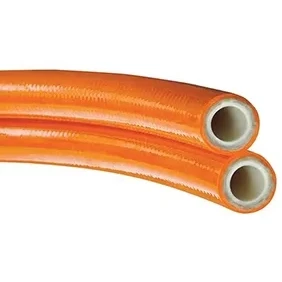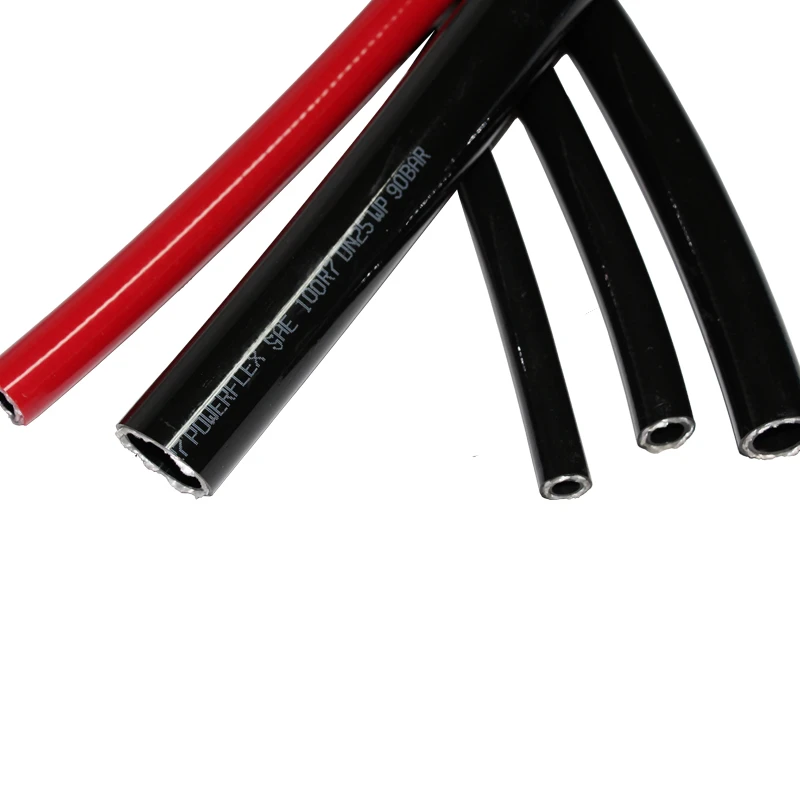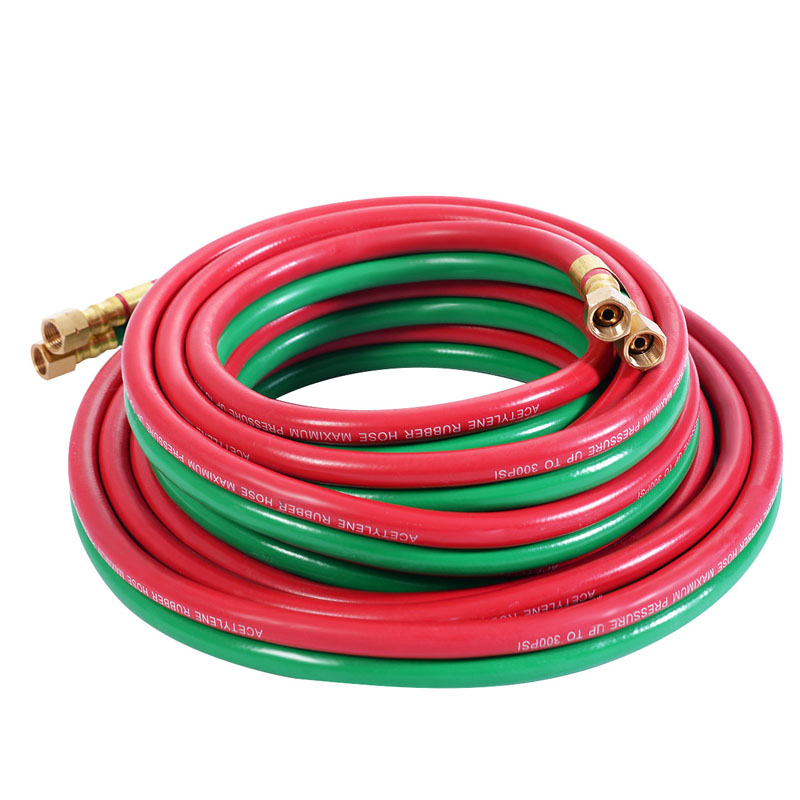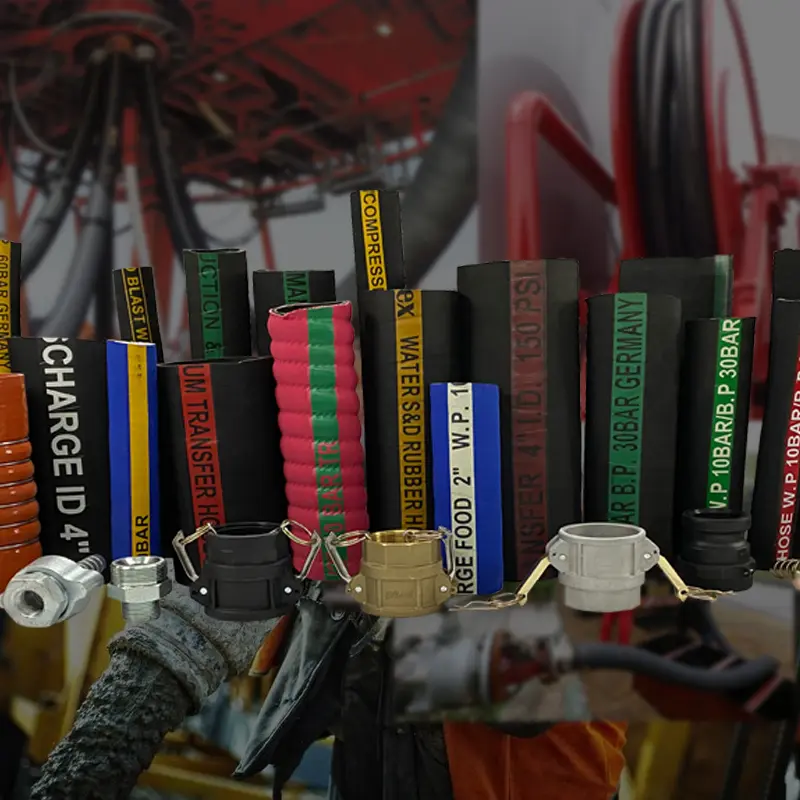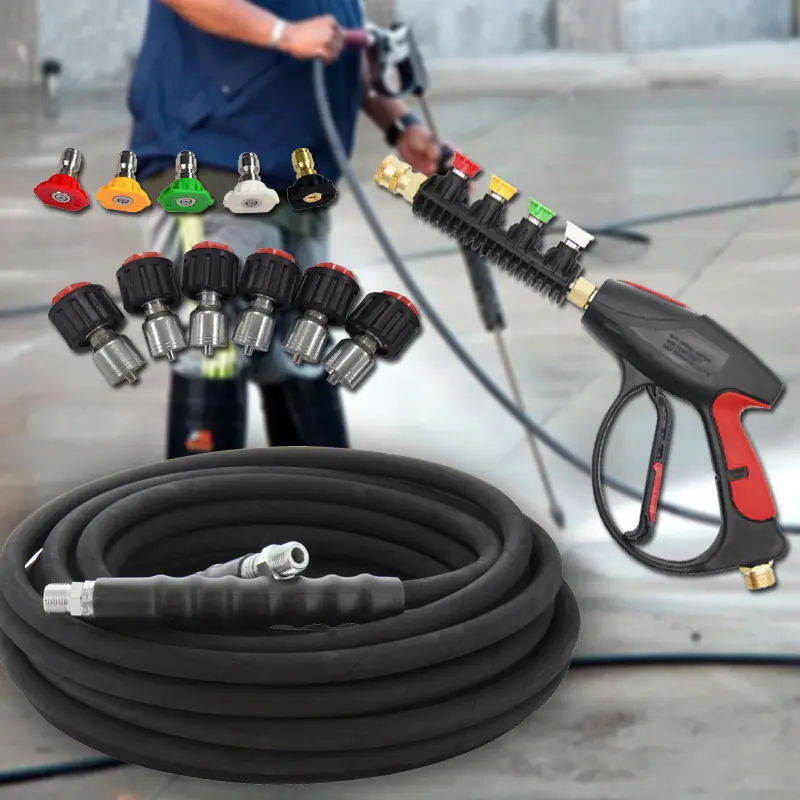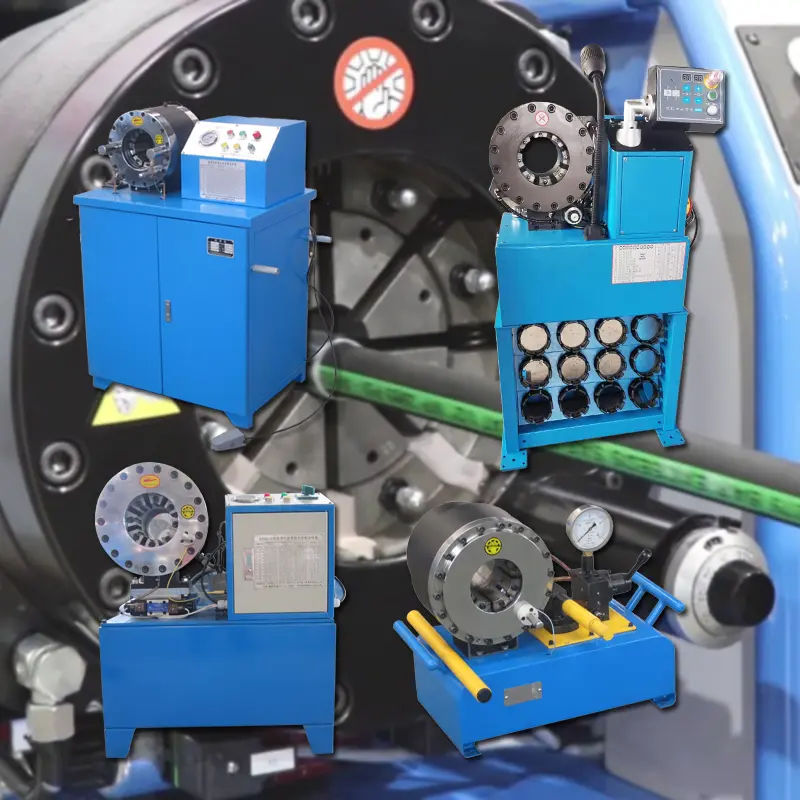In today’s global industrial environment, operations are increasingly extending into areas with extreme climates. From Arctic exploration to heavy machinery in cold storage facilities, the ability to maintain fluid transmission under low temperatures is essential. A flexible hose for low temperature is designed specifically for such challenges. These hoses combine advanced materials and precise engineering to ensure flexibility, durability, and consistent pressure resistance even at -40°C or below.
Unlike conventional hoses, low-temperature models use synthetic rubbers and reinforcements that remain elastic instead of stiffening or cracking in cold conditions. Whether it’s hydraulic systems, pneumatic controls, or oil transfer lines, the right low-temperature hose ensures safe and efficient operation when the environment becomes unpredictable. This makes them indispensable for industries like transportation, mining, agriculture, and oil drilling—where reliability directly affects productivity and safety.
What Is The Flexible Hose For Low Temperature?
Polyethylene (PE) Hose
PE hoses can be used in environments ranging from -30°C to +100°C (short-term up to 120°C). They are flexible, corrosion-resistant, and commonly used to compensate for pipe displacement and absorb vibration.
Silicone Hose
Silicone is resistant to both low and high temperatures. It can typically be used long-term in a wide temperature range of approximately -60°C to +250°C, and has good cold and heat resistance.
Ethylene Propylene Diene Monomer (EPDM) Hose
EPDM hoses typically have low-temperature resistance of around -50°C to -60°C. They are commonly used in hoses and seals in refrigeration, cooling, and fuel systems, and are also used in the automotive industry.
Nylon Hose
Nylon hoses are made of PA6/PA12 material and maintain good flexibility and abrasion resistance even in low-temperature environments, making them suitable for applications requiring high strength and durability. TPU Material Hose
TPU (Thermoplastic Polyurethane) maintains its elasticity and flexibility at temperatures as low as -40°C, making it suitable for cryogenic seals, cable sheathing, and other applications.
Specially Manufactured Rubber Hydraulic Hose
We can produce extremely cold-weather hydraulic hoses that are resistant to low temperatures and pressure, suitable for hydraulic systems in machinery operating in cold environments.
Reliable Performance With High Pressure Hoses For Sale
When selecting high pressure hoses for sale, buyers often focus on pressure capacity, but in cold environments, flexibility is just as important. High-pressure hoses must endure both internal hydraulic stress and the external effects of freezing temperatures. To achieve this balance, manufacturers use multi-layer reinforcement—usually high-tensile steel wire or textile braiding—combined with rubber compounds engineered for elasticity and low-temperature resistance.
These hoses are commonly found in hydraulic excavators, snowplows, forestry equipment, and offshore oil platforms, where pressure surges are frequent and the ambient temperature can fluctuate rapidly. A hose that cannot bend or flex in subzero conditions risks rupturing, which may lead to oil leaks, downtime, or costly repairs. Therefore, a reliable supplier offering certified high-pressure hoses ensures stable performance, minimal maintenance, and compliance with international standards like SAE, ISO, and DIN.
Additionally, modern high-pressure hoses are often designed with ozone-resistant outer covers, enhancing durability against weather exposure. This innovation not only extends service life but also reduces replacement frequency, supporting environmental and economic sustainability in industrial operations.
Inside The Hydraulic Hose Manufacturing Process
Understanding the hydraulic hose manufacturing process reveals why low-temperature hoses achieve such exceptional performance. The process starts with the careful selection of raw materials—typically a combination of synthetic rubber (like NBR, EPDM, or CR) and high-strength steel wire. These materials undergo advanced compounding to ensure flexibility, oil resistance, and thermal stability.
-
Extrusion: The inner tube is extruded to create a smooth, uniform passage for fluid. This ensures consistent flow and prevents turbulence or leaks.
-
Reinforcement Braiding: Layers of high-tensile steel wire or textile fibers are tightly braided around the inner tube, providing the structural integrity needed to handle high pressure.
-
Wrapping and Vulcanization: The hose is wrapped with protective layers and then vulcanized in high-temperature steam chambers. Vulcanization enhances elasticity and bonds all layers firmly.
-
Testing and Inspection: Each hose undergoes pressure, burst, and cold-flex tests to ensure it meets operational standards before shipment.
At this stage, hoses meant for low-temperature performance are subjected to additional tests—such as flexibility at -40°C—to confirm that they remain pliable without micro-cracking. Manufacturers that use automated production systems can maintain consistent quality and minimize human error.
This precision manufacturing ensures that every hose not only meets the required specifications but also exceeds them in durability and operational reliability. It’s this rigorous process that allows Sinopulse and other industry leaders to deliver hoses that can function effectively in both polar and temperate climates.
Understanding The Different Hydraulic Hose Pipe Types
Selecting the right hydraulic hose pipe types is essential to achieving efficient and safe system operation. Each hose type is designed for a specific pressure range, temperature tolerance, and fluid compatibility.
-
SAE 100 R1AT and R2AT: Commonly used for medium to high-pressure hydraulic systems, offering flexibility and strength suitable for low temperatures.
-
SAE 100 R12 and R13: Designed for very high-pressure applications; their spiral steel wire construction enhances durability against pulsating pressure and cold impact.
-
SAE 100 R16 and R17: Lightweight, compact hoses used where installation space is limited but flexibility is critical.
-
Thermoplastic Hoses: These are ideal for lightweight, portable systems, providing excellent cold-weather flexibility and chemical resistance.
Each hose type comes with its own advantages. For instance, R16 hoses are often preferred in Arctic or northern regions because of their compact size and excellent bending characteristics. On the other hand, R12 hoses are chosen for their ability to handle both extreme pressure and freezing conditions simultaneously.
When choosing a hose, users should consider the operating environment, pressure level, flow rate, and temperature range. Proper selection not only extends the service life of the hose but also improves overall hydraulic system performance, reducing the risk of downtime and leakage.
Exploring Common Hydraulic Hose Uses
The hydraulic hose uses in low-temperature environments extend across multiple industries. In construction and mining, these hoses power excavators, loaders, and drilling rigs that must operate efficiently even in winter climates. In agriculture, they enable tractors and sprayers to function smoothly during frost seasons. In transportation, they ensure braking and steering systems in heavy-duty vehicles perform reliably on icy roads.
In oil and gas exploration, low-temperature hydraulic hoses are used in drilling platforms and refineries operating in polar regions. Their resistance to brittleness prevents fluid blockages and protects workers from hazardous leaks. Additionally, these hoses are found in snow-removal vehicles, de-icing systems, and even military equipment designed for Arctic missions.
The versatility of these hoses lies in their ability to maintain consistent fluid transmission despite external temperature variations. Their design also includes UV and abrasion-resistant covers, protecting them from mechanical wear and environmental damage. Regular inspection and maintenance, such as checking for surface cracks and tightening couplings, further ensure long service life and dependable performance.
At Sinopulse, we are dedicated to enhancing industrial performance through innovative technology and exceptional customer service. Founded in 2011, Sinopulse began as a small startup with a big dream. Over the past decade, we have grown into a leading industrial hose, hydraulic hose & fittings manufacturer boasting a 45,000 m² workshop, 86 production lines, and a dedicated team of over 200 employees. Our commitment to quality and efficiency enables us to produce an impressive 100,000 meters of hose daily, offering the worldwide most reliable, safe, and efficient qualified hose and coupling.
Sinopulse’s expertise lies in producing hoses that perform flawlessly under extreme pressures and temperatures. Our advanced research and development department continues to innovate, integrating new materials that improve low-temperature elasticity and resistance to oil, ozone, and abrasion.
We take pride in delivering custom solutions that meet specific industrial requirements. From hydraulic hoses and fittings to complete fluid power systems, Sinopulse serves customers in more than 50 countries across mining, agriculture, construction, and energy industries.
At Sinopulse, our goal is simple: to ensure your equipment runs efficiently, safely, and reliably, no matter how tough the conditions get. Our strong after-sales support, global logistics network, and customer-centered philosophy make us a trusted partner in the world of hydraulic and industrial hose manufacturing.
FAQs
What makes flexible hoses suitable for low temperatures?
Flexible hoses for low temperature are made from synthetic rubbers like NBR or EPDM, which stay elastic in cold climates. They also include steel or textile reinforcement that maintains strength without becoming brittle.
How do high-pressure hoses perform in freezing conditions?
High-pressure hoses designed for low temperatures remain flexible and strong due to their unique rubber compounds and multiple reinforcement layers. They resist internal stress and prevent leaks, even in extreme cold.
Can hydraulic hoses transfer hydraulic oil and antifreeze fluids?
Yes. Low-temperature hydraulic hoses are compatible with hydraulic oils, antifreeze, lubricants, and other industrial fluids without compromising elasticity or sealing performance.
How can I identify the right hydraulic hose type for my application?
Check the required working pressure, temperature range, fluid type, and environmental exposure. Consulting professionals or suppliers like Sinopulse ensures accurate selection and safe system performance.
Why choose Sinopulse for hydraulic and industrial hoses?
Sinopulse combines world-class production capabilities with strict quality control and innovation. Their hoses are built to perform under extreme pressures and temperatures, backed by excellent customer service and global distribution support.
Product Application












